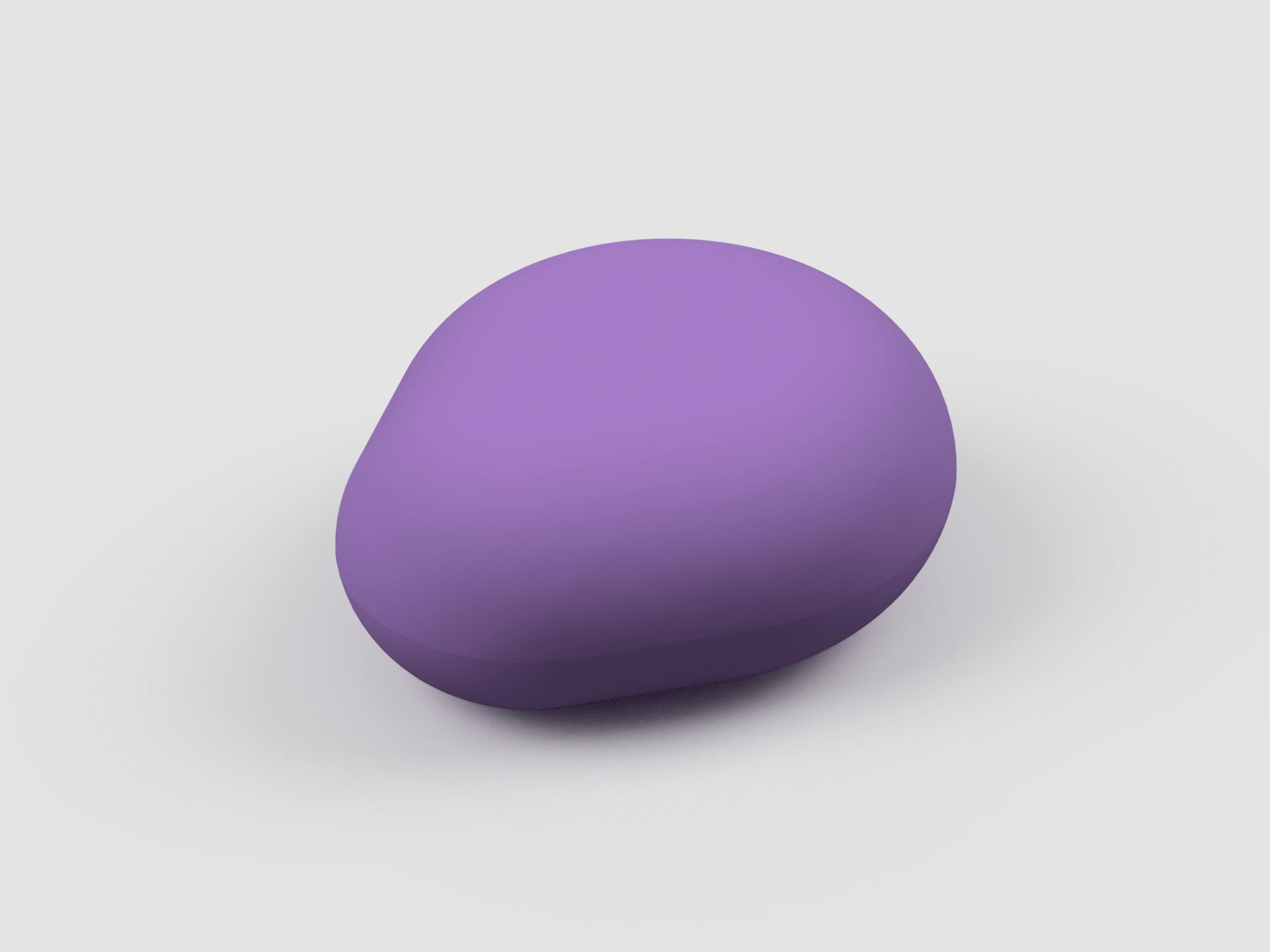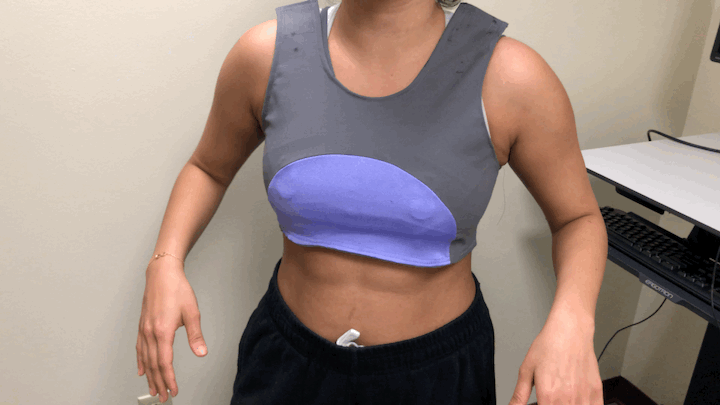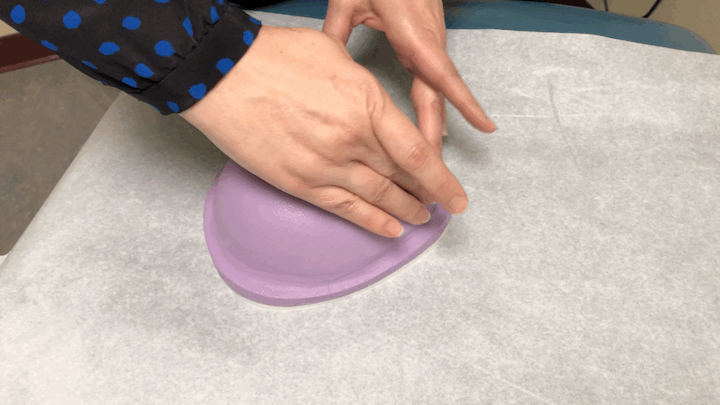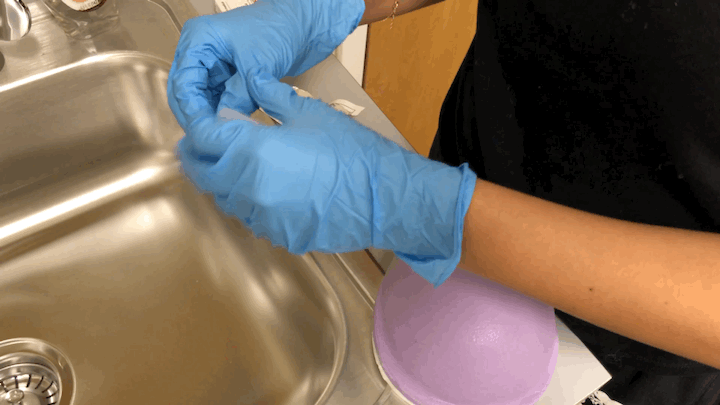top of page
Rho: Breast Density Measurement System
Massachusetts Institute of Technology / Rhode Island School of Design
Spring 2019
Introduction
As part of a collaborative, semester long course between the MIT Sloan School of Business and RISD, teams of students were tasked with taking a product from concept to a production-ready design.
Teams of engineers, MBAs and industrial designers leveraged their skills and experience to create a product ready for the market.

Mission
Rho is a tool to aid in the fight against breast cancer. There is a great deal of uncertainty about the causes of breast cancer and it can be difficult to accurately predict individual risk or the development of the disease after diagnosis. Helping to identify key risk factors early ensures a greater chance of early detection and ultimately a more positive outcome.
Problem Space
Breast cancer is the most common form of cancer in women worldwide. It represents over 25% of all cancers diagnosed in women, resulting in over 2 million cases per year.
What is breast cancer and How is it Detected?
Breast cancer starts when cells in the breast begin to grow out of control. These cells usually form a tumor that can often be seen on an x-ray or felt as a lump. The tumor is malignant (cancerous) if the cells can invade surrounding tissues or spread (metastasize) to different areas of the body.

How is breast cancer detected?
Breast cancer can be detected in three ways: imaging, a clinical breast exam, or a self breast exam. Each method has certain benefits and risks that must be taken into account when making decisions about detection.
Imaging
Imaging techniques include mammograms, breast ultrasounds, and MRI scans.
Mammograms are the most common method of detecting and diagnosing breast cancer. A mammogram is an x-ray image of a breast. Using plates to flatten breast tissue for a better image, mammogram machines provide a detailed view of the structures within a breast, including tumors and abnormalities.

Screening mammograms are performed at regular intervals after a certain age to check for abnormalities.
The images taken by mammogram machines allow for more accurate diagnoses, confirmation of preliminary diagnoses, and with routine screenings, a greater chance of early detection.
Problems with Mammograms
Mammograms are by far the most effective way to diagnose breast cancer. However, there are problems associated with undergoing a mammogram.
Pain
Undergoing a mammogram screening is extremely uncomfortable for most women and many experience severe pain.
Mammogram technicians adjust the compression force based on breast size, skin tautness, and pain tolerance.
Injury
In many cases, damage to structures within the breast or breast tissue can occur.
Mammogram equipment can often apply up to 4 pounds of pressure per square inch.
Radiation
Mammograms require relatively small doses of radiation. The risk of harm per dose from this radiation exposure is low, however repeated exposure to x-rays increases the risk of developing cancer.
In addition, women who are pregnant or breastfeeding cannot get mammograms.
Breast Density as a Risk Factor
Breast density is a key factor in determining risk factor, approaching screening, and ease of diagnosis. Density falls within four main categories.

A
B
C
D
Least Dense
Less Dense
More Dense
Most Dense
Almost entirely fatty tissue
Scattered Fibrogalndular Tissue
Heterogeneous Fibroglandular Tissue
Dense Fibrogladular Tissue
Women with dense breast tissue are up to eight times more likely to be diagnosed with breast cancer.
Currently, the only reliable way to determine breast density is through imaging techniques such as MRIs or mammograms.
User Group
The main users identified in this problem space can be put into two categories: women's healthcare professionals and their patients.

Dr. Adams
Dr. Adams is a physician in the women's clinic of a large hospital with over 15 years of experience.

Jennifer
Jennifer is a patient of Dr. Adams' and is reaching the age at which regular yearly mammograms are recommended.
Their Concerns
Like Jennifer, many of Dr. Adams' patients will be entering the age where yearly mammograms are recommended, around age 40. Many of her patients have expressed concerns about the risks associated with mammograms in comparison to the benefits.
What Dr. Adams Wants for Her Patients
Better Guidelines
While mammograms are critical in screening for breast cancer, she wishes there were more consistent guidelines about when her patients should start yearly screenings.
Individual Advice
Dr. Adams wonders if there is a way to advise her patients on a more individual basis about when they should start yearly mammogram screenings, based on personal risk factors.
Goal and Target
Our product will provide patient's breast density measurements so clinicians can better advise their patients on a more individual basis about the right time to start yearly screenings. In addition, we aim to spread more knowledge about breast cancer across density types.
A tool for healthcare providers such as Women's Health Clinic Physicians and Gynecologists to better help their patients within the age range at greates
Whiteboarding
Through research, it became apparent that there were points in the breast cancer prevention and early detection process that could be improved. The team went through various ideas and we voted on which possible solution areas seemed within the scope of the project and would be marketable to our target user group.


Key Aspects of Breast Cancer
Treatment and Prevention
In order to evaluate possible solution spaces, key aspects were identified and areas of interest were chosen to pursue further.

After narrowing down solution areas, more specific spaces were explored. In the end, two main solution spaces emerged for concept development.
Density Measurement Garment
Tactile Density Demonstration Model
Density measurement device intended to be worn during an exam to accurately measure breast density without the need for a mammogram or invasive test.
A way to put the data collected from a density measurement device into context. Provides an accurate representation of different density types and what suspicious masses feel like in each density category.


Concept Development
From initial brainstorming sessions, three main opportunity spaces emerged for exploration.

Density Measurement Garment
Initial sketch concepts for the breast density measurement garment. Sketches exploring form factors that move away from traditional medical device garments.


Balancing functionality with a more traditional undergarment look allowed the concepts to stand out from a distinctly medical feel. Prioritizing comfort both physically and emotionally was a priority.
Tactile Density Demonstration Model
Initial ideation of a way to make the data collected from a measurement device more tangible to patients.


Using a variety of materials to simulate breast tissue, rough models were created to determine the feasibility of a realistic tactile model that accurately represents suspicious structures in the breast.

A wide range of form factors were considered and then narrowed down to a few that would be modeled for tactile testing.

Foam models were created to determine the form factor for the tactile aids.
Functionality Testing
Works-like models of both the density measurement garment and the tactile density demonstration models were constructed.

Extensive testing of the sensors and fabric demonstrated a proof of concept and work began on integrating the technology into the final density measurement garment.


In order to achieve the anatomically correct feel of breast tissue, experimentation with different fill and skin materials was conducted.
The chosen material for simulating skin is a silicone that is designed to mimic the required rigidity and elasticity. This material was molded with a fine, rough texture that mimics pores in human skin. In addition, the thickness of the silicone skin was determined.
Each tactile model is filled with loose cotton mixed with a thin silicone in various ratios. This gives each model a different density filling and accurately simulates different types of breast tissue.
Concept Refinement
Looks-like models of both the density measurement garment and tactile aids were created to help finalize the aesthetics.


Final patterns were created to combine the desired form with the functionality required, while paying attention to eventual manufacturability.
Materials for the garment were chosen and revolve around durability, washability, and comfort. The garment consists of stretchable nylon fabric with durable elastic banding to help facilitate the flexibility of the stretch sensors woven into the inside of the garment.


Rho: Breast Density Measurement System
The Rho System consists of two parts: a measurement garment and tactile aids to help understand how breast density affects the risk factor for breast cancer.

Rho: Breast Density Measurement Garment
Using non-invasive stretch-sensing technology, the measurement garment provides accurate density data to doctors and patients.

How Does it Work?
Using simple math and basic physics, the density measurement garment uses mass and volume measurements to find density.
Density =
Mass
Volume
Mass Sensors
Volume Sensors
Measuring mass without actually measuring mass involves measuring the acceleration over a certain distance and the mass can be calculated.
Calculating the volume of an irregular 3D object is extremely difficult, however it can be achieved with stretch sensors that feed into a 3D computer model that calculates the volume.



1. Micro Controllers Connected to Sensors
2. Cable for Power and Data Collection
3. Mass Stretch Sensor
4. Elastic Band
5. Shoulder Accelerometer
6. Lower Accelerometer
7. Volume Stretch Sensors
8. Cover Flap
Mass Data Collection Method 1
Collecting mass data requires movement of the breasts. This may be difficult for some women with mobility issues. This method is easy to do and can be done with the help of a healthcare professional.
Patient lifts and then drops breasts a few inches if possible. Accelerometers and vertical stretch sensors measure and log movement data.
It is important that the lower accelerometer is positioned over the farthest protruding part of the breast.


Mass Data Collection Method 2
This method is more suited for those who can stand and balance on their own. In addition, this technique is better for women with breasts that cannot be lifted.
The patient stands on their toes then drops to flat feet. Accelerometers and vertical stretch sensors measure and log movement data.
It is important that the lower accelerometer is positioned over the furthest protruding part of the breast. In addition, it is ideal to have many data sets, therefore multiple drops may be needed.


Volume Data Collection
Patient stands as still as possible and the stretch sensors measure the breast volume. The data is then processed in CAD software and a volume measurement is calculated.

Rho: Tactile Demonstration Aids
The purpose of the tactile aids is to give patients context behind their density measurement. Knowing what to look for in specific breast tissue densities may lead to earlier detection of a suspicious mass.


Epoxy Resign Lumps
Dragon Skin Membrane
Cotton Polyfill
Silicone Beads
Silicone Base
Simulated Densities
Just as there are four density categories of breast tissue, there are four different tactile models, each representing a different density classification. Each model's density is created using a differing amount of filler material
Tissue Layer Simulation
Dragon skin simulates both the texture and elasticity of skin while cotton and silicone beads simulate different layers within the breast.
Suspicious Lump Simulation
Lumps are scattered throughout the polyfill layer to simulate different shapes and sizes of potentially suspicious bodies.

Hygiene and Sanitation Considerations
Because both components of the Rho system will interact with multiple patients per day, they will need to be sanitized in between patients to prevent cross-contamination.
Density Measurement Garment
The garment employs a liner that can either be thrown away or washed in the hospital's laundry.
Tactile Demonstration Aids
Each tactile aid can be washed with soapy water or scrubbed with an alcohol wipe.

Patient and Clinician Use

The Rho system s designed to be used by both clinicians and patients to help monitor and educate at the same time.
Rho: Breast Density Measurement System
bottom of page

